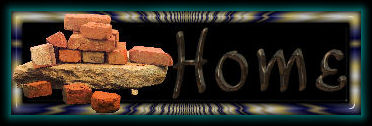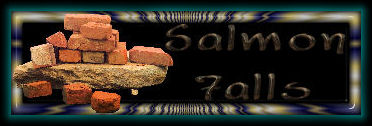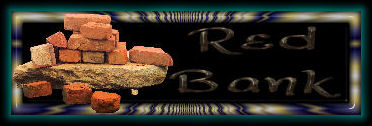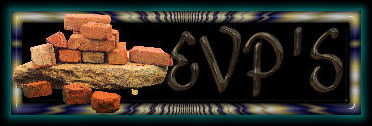Mib, conspiracy, time travel,
spectres, Armageddon, prophets, prophecy, paranormal, ghosts, aliens,
haunted houses, Cryptozoology, dimensions, apocalypse, Atlantis,
curses, monsters, wild man, yeti, cemetery, stigmata, vampyre,
vampires, angels, bizarre, metaphysics, Atlanta, Louisiana, Myrtle
Beach, planet x, mothman, jersey devil, apparitions, werewolf,
werewolves, devils, vortexes, Bermuda triangle, lycanthropes, mystery,
ancient, spirits, cydonia, mythology, Charlotte, Atlanta ,Mobile,
possession, possess, mailing list, parapsychology, poltergeist, evp,
investigation, crop circles, Roswell, abduction, project blue book,
living dinosaurs, religious miracles, NY, sightings, north Carolina,
south, brown mountain, cleansing, shadowmen, beast, ogopogo, death,
portals, spontaneous human combustion, zombies, Ouija boards,
nostradamus, Edgar Cayce, art bell, George Nooray, Magick, Paganism,
Wicca, Tennessee, Halloween, bigfoot, Sasquatch, ufo, grays, ufos,
vortexes, alien, hybrids, Hauntings, demons, demonology, occult,
Magick, mystics, lochness, chupacabras, equipment, Thermal, EMF,
Cassadaga, energy, asteroid ,civil war, spooky, scary, adventure,
ectoplasm, orbs, graveyards, demons, spirits, cults, buffalo, new York,
ghost society, logo wear, equipment, books, videos, music,
certification, Castles, Forts, fortean, phenomena, nonprofit ,business,
investigations, SHC, EMF, ghost hunting, organization, conventions,
hollow earth, paranormal & ghost Society, detector, posters,
mailboxes, donate, Buffalo, X-files, Ectoplasm, Magick, spells, Wicca,
paganism, holy, cross, Armageddon, NWO, Patriot, 911, September 11th,
tours, Cryptid, ghost lights, dinosaurs, Florida, Fl, Daytona Beach,
Jacksonville, St. Augustine's, Debary, Miami, Tampa bay, Sarasota,
Pensacola, NASA, Cape Canaveral, Space Coast, space shuttle, gulf
breeze, key west, Sanford, port orange, Ormond beach, New Smyrna,
Orlando, Disney world, Tallahassee, Stetson university, panama city,
Alabama, Georgia, Savannah, New Orleans, Cocoa Beach, Ocala,
plantations, Fort Lauderdale, Melbourne, Naples, Lake Wales, grim
reaper, everglades, Seminoles, big cats, Fort Myers's. Petersburg,
Lakeland, Gainesville, West Palm Beach, bike week, spring break,
Deland, Deltona, Orange City, weird, strange, bizarre, mysterious,
rituals, skunk ape, adventure, ships, Bermuda triangle, ghost pirates,
ball lightening, Elves, Fairies, Faeries, Dwarves, Mystical, Mystify,
Port Orange, Edgewater, Clear Water, FSU, Abandoned, Buildings,
Stories, New Age, Occult, Paganism, Tours, Ghost walks, Cydonian,
Pyramids, Ancient, Dead, Soul, Spiritual, Metaphysical, Aura, Tarot,
Naples, Key West, Ever Glades, Kissimmee, Sanford, Orange City, Volusia
County, WNY, Asylum, Entity, Entities, Comet, Space, Ponce Inlet,
Dimensions, Mist, Fog, Horror, Radio, Television, Spontaneous Human
Combustion, Telepathy, Telekinesis, Magic, pubs, castles, churches,
bars, tracks, exorcism, October, Books, Posters, Lake Helen, Fort
Lauderdale, Psychic, Gargoyles, Crystal Skulls, Champ, Mutation,
Miracles, Virgin Mary, Prehistoric, Historical, Being, Men In Black,
Visitors, Mailing List, Mounds, Astronauts, Beam, Reptilian, Dolce,
Specters, Bell Witch, Warlock, Shadowman, Palm Beach, Tallahassee,
Holly Hill, Miami, Winter Park, Global Warming, Contrails, Chemtrails,
Flagler, Homestead, Emerald Coast, Fort Myers, Fort Walton Beach,
Naples, Punta Gorda, Birmingham, Decatur, Dothan, Montgomery,
Tuscaloosa, Columbus, Charleston, Myrtle Beach, Sumter, Athens, Raleigh
Durham, Alexandria, Lafayette, Lake Charles, Monroe, Shreveport,
Bossier City, Greenville, Onslow, Piedmont Triad, Hampton Roads,
Huntington - Ashland Area, Huntsville Area, Idaho Falls - Pocatello
Area, Indianapolis, Iowa City, Jackson, MI, Jackson, MS, Jackson, TN,
Jacksonville, Jefferson County, Johnstown - Altoona, Johnstown,
Jonesboro, Joplin, Joplin - Pittsburg, Juneau, Kansas City, Knoxville,
La Crosse, Lafayette Area, Lafayette, IN, Lafayette, LA, Lake Charles,
Lansing - East Lansing, Lansing Metro, Laredo, Las Cruces, Las Vegas,
Lawton, Lehigh Valley, Lewiston
- Auburn, Lexington, Lima, Lincoln, Little Rock, Little Rock - Pine
Bluff Area, Long Island, Longview, Los Angeles, Louisville, Lubbock,
Lynchburg Area, Madison, Madison Metro, Mankato Area, Marquette,
Memphis, Merced, Meridian, Michiana, Milwaukee, Missoula, Mobile,
Mobile Pensacola Area, Monroe, Monterey Bay Area, Montgomery, Myrtle
Beach Area, Naples, Nashville, National, New Orleans, New York, North
Central Ohio, Northeastern Pennsylvania, Northeastern South Carolina,
Northern Alabama, North Jersey, North Platte Area, Northwest Alabama,
Northwest Arkansas Area, Northwest Arkansas, Oklahoma City, Omaha,
Onslow County, Opelika Auburn, Orange County, Orlando, Ottumwa -
Kirksville, Owensboro, Palm Springs Area, Pensacola, Peoria - Pekin,
Philadelphia, Phoenix, Piedmont Triad, Pine Bluff, Pittsburgh,
Portland, OR, Portland, Portsmouth Rochester, Presque Isle Area,
Providence, Pueblo, Punta Gorda, Quad Cities, Quincy - Hannibal -
Keokuk, Raleigh Durham, Rapid City, Redding - Chico, Redding, Red River
Valley, Reno, Richland - Kennewick Area, Richmond, Rio Grande Valley
Area, Roanoke, Rochester, MN, Rochester, NY, Rock County, Rockford,
Sacramento, Saginaw - Bay City - Midland, Salt Lake City, San Angelo,
San Antonio, San Diego, San Francisco, San Jose, Santa Barbara,
Savannah Area, Scranton Wilkes Barre, Seattle, Sharon, Shenandoah
Valley, Sherman - Denison, Shreveport - Bossier City, Shreveport, LA
Area, Sioux City, Sioux Falls, South Bend, Southeastern North Carolina,
Southern Colorado, Southern Maine, Southern Oregon, Southern Washington
Area, Southern West Virginia, South Florida, Southwestern Indiana,
Southwest Florida, Southwest Georgia, Spokane, Springfield Area,
Springfield - Decatur - Danville, Springfield, MO, Springfield, State
College, Steubenville - Weirton, St. Joseph, St. Louis, Sumter,
Syracuse, Tallahassee Area, Tampa Bay, Terre Haute, Texarkana, Toledo -
Findlay Metro, Toledo, Topeka Area, Tri - Cities, Tri - State Area: KY
- IL - MO, Tucson - Sierra Vista, Tulare County, Tulsa, Tuscaloosa,
Twin Cities, Twin Falls Area, Tyler Area, Tyler, Utica - Rome,
Victoria, Waco, Washington, DC, Waterloo Cedar Falls, Watertown Area,
Wausau - Rhinelander Area, West Central Ohio, West Central Wisconsin,
Western Carolina - NW Georgia, Western North Carolina, West Palm Beach,
West Texas, Wheeling - Steubenville Metro, Wheeling, Wichita Falls
& Lawton, Wichita Falls, Wichita & Western Kansas,
Williamsport, Yakima, Youngstown - Warren, Yuma, Zanesville, Altamonte
Springs, Crescent City, Eustis, Hollywood, Leesburg, Jupiter, Neptune
Beach, New Port Richey, Lake Wales, Lake Mary, Titusville, St Cloud,
Santa Rosa, Palmetto, Vero Beach, St. Petersburg, Baton Rouge,
Meridian, Jackson, Hattiesburg, Biloxi, Pascagoula, Gulfport, Seminole,
Bordin Booger, Panama City, Goblyn, Ghouls, Loch Ness, Nessie, Bessie,
Selkies, Mermaids, Sirens, Kraken, Dragons, Plesiosaur, Loveland Frog,
Sprites, Seljord serpent, Exmoor Beast, Big Cats, Lake Normon, Lake
Bala, Cressie, Alkali, Illiamna Lake Monster, Cressie, Nyami Nyami,
Masbate, Ponik, Chessie, Selma, Tacoma Sea Serpent, Storsie,
Cadborsaurus, Lake Utopia, Gloucester, Lake Tianchi Monster, Tessie,
Mokele-Mbembe, Mongolian Death Worm, Impakta,Orang-Pendek,Owlman,
Easter Island, Olifiau Monster of Flatwoods, Big Bird, Tatzelwurm,
GOATMAN OF MARYLAND , BEAST OF BODMIN MOOR, Kaptar, Biabin-guli,
Grendel, Ferla Mohir, Brenin Ilwyd, Ngoloko, Kikomba, Gin-sung, Yeti,
Mirygdy ,Mecheny, Chinese Wildman, Nguoi Rung, SPRING HEELED JACK,
Pressie, Hardin, White River, Parapsychology, Elves, Bennington
Triangle, Marfa Lights, OBE, Astral, Enigma, Urban Exploration,
Tunnels, Caves, Gaia, earth, healing, new age, runes, goddess, covens,
Asatru, Asatruar, Druid, Druidism, Druidry, Druids, Odian, Odianism,
Odians, Odin, Odinism, Odinist, Odinists, Santeria, Santerian,
Santerians, Setian, Setianism, Setians, Strega, Stregheria, Wicca,
Wiccans, Witch, Witchcraft, Witches, Pagan, Paganism, Neo-Pagan,
Neo-Paganism,Neo-Pagans, poetry, cats, faerie, fairy, faeries,
elements, occult, metaphysics, reiki, alchemy, shaman, Shaman,
Shamanism, Celtic, Native American, Norse, tarot, divination, circle,
fellowship, Samhain, Yule, Imbolic, Ostara, Beltane, Midsummer,
Lughnassah, Mabon, crystals, nature, moon, mythology, sabbat, chants,
dragons, tantra, singles, dating, willow, fire, Isis, gothic,
renaissance, numerology, astrology, Rite, Rites, altar, Mysticism,
brews, Deity, Talisman, Voodoo, charms, Bos, Diana, Hecate, Astarte,
Kali, Fey, Pan, Loki, Totems, Spirit Guide, psychic, Angels, white,
Sacred, Green, Aura, Elementals, mage, magic, Solstice, Equinox, Palm
Reading, Charms, Deity, Invocations, Thermal Detector, Radiological,
Ion, Video Cameras, Micro cassette Player, Centaurs, Cerebral Anoxia,
Clairoleofactor, Clairvoyance, Cosmology, Cryptomnesia, Abductee,
Aigypan, Alchemy, Animism, Automatic Writing, ESP, Daemon, Deja Vu,
Dematerialization, Demonology, Discarnate Spirits, Disembodied,
Doppelganger, Dowsing, EEG or Electro-encephalography, Empathy, Gaus,
Banshee, Basilisk, Body Snatcher, Bunyip, CA, Sacramento, San
Francisco, Oakland, Chico, Lake Tahoe, Jackson, California, Research,
Myspace, Bands, Music, Electronics, Suvival Gear, Protection, Adult,
Amazson, EBAY, MYSPACE, Gothic, Rock, New Age, Alternative, Punk,
Amibent, Electronic, England, France, Paris, Australia, Trains, Mine,
Radio, AngelOfThyNight, Dark, Cursed, Sin City, Canyon, Desert, Mojave,
Adsense, Google, Best Buy, Flashlight, EMF, Energy, Cult, Church,
Nightfall Radio, Tagged, Yahoo, Messenger, Prophet, God, Godlike, Dark
Matter, Lake Tahoe, Sierra Nevada's, Carson City, Minden, Gardnerville,
Markleeville, Woodfords, Indian, Valley, Carson Valley, Indian Hills,
Sparks, Reno, Fernley, Dayton, Truckee, Fredericksberg, Ranchos, Genoa,
Kingsbury,Fallon, Washoe, Pleasant Valley,Silver Springs, Silver City,
Gold Hill, Virginia City, Moundhouse, Empire, Dresslerville, Smith
Valley, Yerington, Wellington, Sacramento,Stockton, Sonora, Angels
Camp, Placerville, Folsom Lake, Topaz Lake,Forest Hill, Alpine, Douglas
County, Philips, Nebelhorn, Wadsworth, Patrick, Meyers, Columbia,
Jamestown, Churchhill, Lyon County, El Dorado County, Amador
County,Placer County and Storey County
|



































